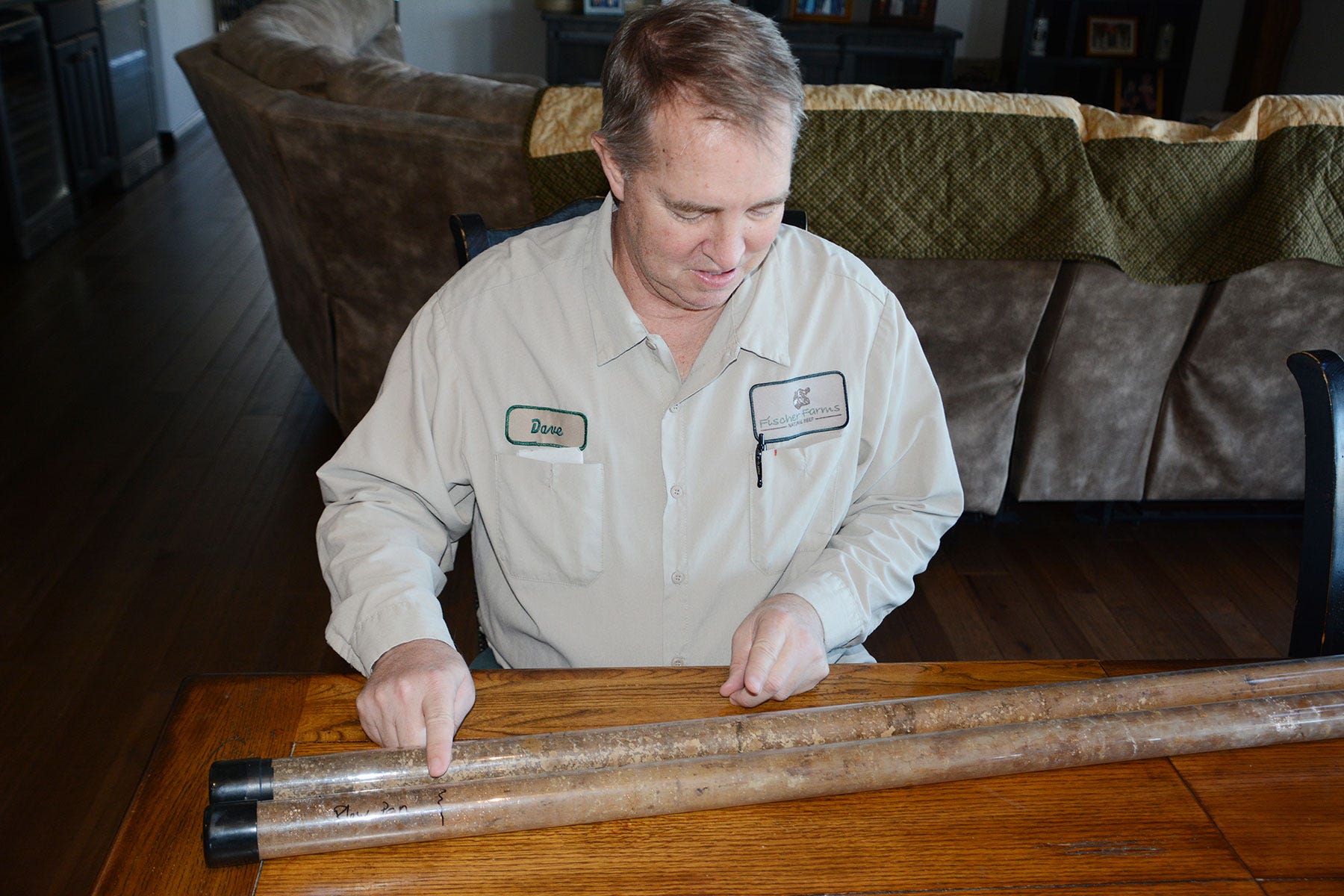
Dave and Diana Fischer care about the soil on their sixth-generation livestock farm in Dubois County, Ind. After all, thanks to steep hills and earlier farming practices, they don’t have much topsoil left in some spots. They also do their part to protect the climate.
That combination resulted in the Fischers receiving a Climate Smart Commodities grant from USDA in 2022. They’re in the second year of a five-year grant program.
“We designed the grant around exploring ways to document that we’re capturing more carbon in the soil with forages,” Dave explains. “We’re also evaluating methods for reducing methane that our cattle produce.”
One primary way to reduce methane emissions appears to be feeding cattle a small amount of kelp, a type of seaweed. “Red kelp supposedly works best, but it is very hard to get,” Dave says. “We’re feeding a different kelp and seeing some benefit.”
Setting a carbon base line
In the summer of 2023, Fischer’s basement contained a carton of 100 durable, clear plastic tubes, 3 feet long by 1.5 inches in diameter.
“Each one fits inside the hydraulic coring machine soil scientists use to take soil profiles,” he says. “The first step in seeing if we can add carbon to the soil over time is seeing how much is in the soil now.”
Dena Anderson and Travis Gogel, soil scientists with the USDA Natural Resources Conservation Service, brought Anderson’s soil probe truck to Fischer’s farm last fall. Together, they filled dozens of tubes from all over the farm. Then, soil profiles were sent for analysis. Not all the results are back, but Fischer already sees positive signs. More carbon shows up in samples from fields that were in annual ryegrass, especially if they’ve been in cover crops for some time.

BUILDING SOIL: These are just two of dozens of soil profiles pulled on Dave Fischer’s farm. The goal is to document carbon capture at varying depths.
“Annual ryegrass roots go deep,” Fischer says. “We checked a plant seeded for 45 days, and roots were already 29 inches deep.
“I’m already seeing visual differences comparing profiles from fields in long-term cover crops to those which were not. You can see a difference in color.”
Climate Smart grant
Fischer hopes to involve neighbors who raise cattle on rolling land in practicing carbon-smart practices and producing cattle that meet his standards for well-marbled, quality meat. The Fischers operate Fischer Farms, which requires 30 head of beef cattle and 90 hogs per week.
The grant includes funds to incentivize neighbors who want to raise cover crops for grazing and feed, Fischer explains. To earn payment, they would adopt climate-smart practices similar to what Fischer does now.
Fischer Farms supplies restaurants, retailers and online customers, plus Indiana University dining halls. It is based in St. Anthony, Ind., with a facility located next to Sander Meat Processing.
“If this project proves successful and more neighbors join in, we will grow our meat business,” Fischer says. “We would expand our facility so we can do more packaging ourselves. Right now, most of it is done in the Sander facility next door. As volume increases, they will need more room.”
About the Author(s)
You May Also Like




